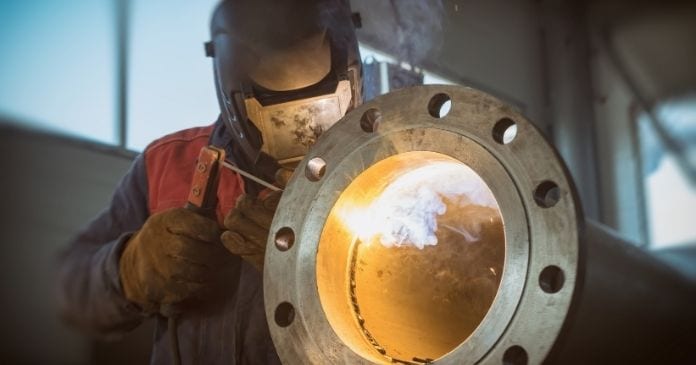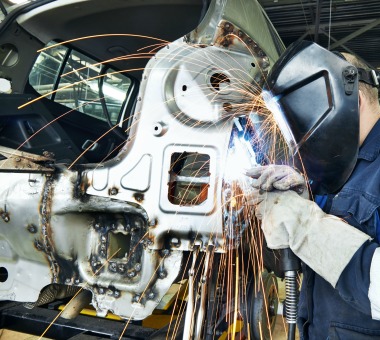Everything about Welding: Key Insights Into Techniques and Ideal Practices for Success
Welding includes a range of strategies, each matched for details materials and applications. Understanding these techniques, such as GMAW, SMAW, and TIG, is necessary for accomplishing perfect results. In addition, the ideal tools and safety methods can not be forgotten. As prep work and fixing play crucial functions in the welding process, grasping these aspects can greatly boost the quality of the end product. What are the key factors that guarantee an effective weld?
Recognizing Different Welding Techniques
Welding strategies incorporate a selection of techniques, each fit to certain applications and materials. Among one of the most typical techniques are Gas Metal Arc Welding (GMAW), Secured Steel Arc Welding (SMAW), and Tungsten Inert Gas Welding (TIG) GMAW, additionally referred to as MIG welding, is prominent for its speed and versatility, making it excellent for thin products. SMAW, or stick welding, is favored for its simpleness and effectiveness in exterior settings, especially with thicker steels. TIG welding uses accuracy and control, making it appropriate for elaborate job and non-ferrous metals (Montana Mobile Welding and Repair). Each technique has its one-of-a-kind advantages and factors to consider, enabling welders to pick the very best approach based on the project's needs, material type, and wanted outcomes. Comprehending these strategies is vital for effective welding
Essential Welding Tools and Tools
While various welding methods require particular skills, the right tools and devices are just as crucial for attaining top quality outcomes. Vital welding devices consists of welding devices, which vary depending upon the method-- such as MIG, TIG, or stick welding. Protective gear, including handwear covers, aprons, and helmets, assurances safety and security and comfort during the process. Furthermore, clamps and components aid secure products in area, guaranteeing accuracy in welds. Consumables like welding poles, wire, and shielding gas are also essential elements that influence the high quality of the weld. Tools such as cutters and grinders help with surface area preparation and post-weld finishing, contributing to a specialist end result. Spending in premium equipment eventually enhances the effectiveness and effectiveness of welding tasks.
Safety Practices in Welding
Appropriate safety practices are necessary in the welding market to safeguard workers from potential risks. Welders must put on suitable personal safety devices (PPE), including headgears with appropriate shading, gloves, and flame-resistant apparel. Ample air flow is essential to decrease direct exposure to hazardous fumes and gases generated during the welding procedure. Additionally, employees ought to be learnt the appropriate handling of welding tools to avoid accidents. Fire precaution, such as maintaining flammable products far from the welding area and having fire extinguishers easily offered, are required. Regular evaluations of equipment and offices can aid identify potential risks prior to they lead to crashes. By adhering to these safety techniques, welders can create a much safer working setting and minimize dangers linked with their profession.
Preparing Products for Welding
Preparing materials for welding is an important step that significantly influences the top quality and stability of the last item (Montana Mobile Welding and Repair Fabrication). Correct prep work entails cleansing the surface areas to get rid of impurities such as dust, rust, and oil, which can compromise the weld. Methods such as grinding, sanding, or utilizing solvents are frequently used to attain a clean surface area. Additionally, making certain that the products mesh well is necessary; spaces can cause weak welds. It's additionally vital to think about the positioning and positioning of the parts, as this will influence the simplicity of welding and the final end result. Lastly, selecting the appropriate filler product and ensuring compatibility with the base steels is essential for attaining strong, durable welds
Tips for Getting High-Quality Welds
Attaining premium welds requires attention to information and adherence to best techniques throughout the welding procedure. Proper joint preparation is crucial, ensuring surfaces are clean and free from pollutants. Picking the appropriate filler material and welding strategy based upon the base metals is critical for optimal bonding. Keeping consistent travel rate and angle while welding can protect against problems and advertise harmony. Furthermore, regulating warm input is crucial; too much warmth can lead to warping and compromised joints. If needed, frequently checking the welds throughout the procedure allows for immediate adjustments. Lastly, using ideal post-weld therapies, such as cleaning and anxiety relief, can enhance the durability and honesty of the weld, inevitably guaranteeing an effective result.
Troubleshooting Usual Welding Issues
Welding frequently presents obstacles that can influence the high quality and integrity of the end product. Common concerns such as porosity, irregular weld grains, and overheating can occur, each calling for particular fixing techniques. Understanding these troubles is crucial for welders to boost their skills and achieve ideal outcomes.
Porosity Troubles Described
Porosity can often be forgotten, it stays a vital concern in welding that can jeopardize the honesty of a completed item. Porosity describes the presence of small gas pockets within the weld bead, which can lead and weaken the joint to early failing. This issue commonly arises from pollutants, moisture, or inappropriate protecting gas insurance coverage throughout the welding process. To alleviate porosity, welders need to confirm that the base products are dry and clean, make use of appropriate protecting gases, and keep consistent welding specifications. Routinely checking the equipment and environment can also aid identify potential issues prior to they show up in the weld. Resolving porosity effectively is vital for accomplishing strong, durable welds that meet quality standards.

Inconsistent Weld Beans
Irregular weld grains can substantially influence the top quality and toughness of a finished item. Various elements add to this problem, including inappropriate travel rate, inaccurate amperage setups, and inconsistent electrode angles. When the welder moves also quickly, a grain might appear slim and lack infiltration, while moving too gradually can trigger extreme buildup. In addition, making use of the incorrect amperage can lead to either undercutting or too much spatter, both of which compromise weld integrity. The welder's technique, such as inconsistent lantern motion, can likewise cause unequal grain look. To minimize these issues, welders should concentrate on keeping consistent, regulated activities and making sure correct tools settings to attain uniformity in their welds. Consistency is essential to attaining see post strong and reliable welds.
Getting Too Hot and Bending Issues
Extreme heat during the welding procedure can result in significant overheating and buckling problems, influencing the architectural integrity of the work surface. These issues typically materialize as distortion, which can jeopardize alignment and fit-up, making further assembly challenging. Elements adding to overheating consist of the option of welding specifications, such as voltage and travel speed, along additional info with the kind of material being welded. To reduce these issues, welders need to keep consistent travel rate and appropriate heat input while keeping an eye on the work surface temperature level. Additionally, preheating or post-weld warmth treatment can aid relieve stresses triggered by quick cooling - Belgrade Welding. Normal inspection and adherence to ideal practices are essential in preventing getting too hot and guaranteeing the longevity and reliability of welded frameworks
Regularly Asked Inquiries
What Are the Profession Opportunities in the Welding Industry?
The welding sector provides varied career opportunities, consisting of placements as welders, teachers, assessors, and designers. Experts can work in production, building and construction, aerospace, and automotive fields, benefiting from solid demand and affordable incomes in various roles.
How Can I Improve My Welding Rate Without Giving Up High Quality?
To boost welding speed without giving up quality, one need to exercise efficient strategies, preserve devices, enhance setups, and improve hand-eye coordination. Normal training and looking for feedback can additionally substantially add to accomplishing much faster, high-grade welds.
What Qualifications Are Offered for Welders?
Numerous accreditations exist for welders, including those from the American Welding Culture (AWS), the National Center for Building Education and Research Study (NCCER), and different industry-specific companies. These credentials boost employability and demonstrate skill proficiency.
Just How Does Welding Affect the Properties of Metals?
Welding influences the residential properties of steels by changing their microstructure, which can lead to modifications in solidity, ductility, and strength. Warmth input and air conditioning prices throughout the procedure significantly influence these product qualities.
Can I Weld Dissimilar Metals With Each Other?

Comments on “What preheat methods can do for distortion prevention in Montana Mobile Welding and Repair Fabrication”